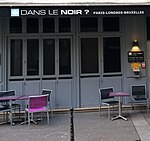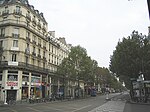Saint-Leu-Saint-Gilles de Paris
Roman Catholic churches in the 1st arrondissement of Paris

The Église Saint-Leu-Saint-Gilles de Paris is a Roman Catholic parish church in the 1st arrondissement of Paris. It has housed the relics of the Empress Saint Helena, mother of Constantine, since 1819, for which it remains a site of veneration in the Roman Catholic and Eastern Orthodox churches. In 1915 the French Ministry of Culture listed it as a monument of historical value.
Excerpt from the Wikipedia article Saint-Leu-Saint-Gilles de Paris (License: CC BY-SA 3.0, Authors, Images).Saint-Leu-Saint-Gilles de Paris
Rue du Cygne, Paris Quartier Les Halles (Paris)
Geographical coordinates (GPS) Address Phone number Website External links Nearby Places Show on map
Geographical coordinates (GPS)
| Latitude | Longitude |
|---|---|
| N 48.8629 ° | E 2.35 ° |
Address
Église Saint-Leu - Saint-Gilles
Rue du Cygne
75001 Paris, Quartier Les Halles (Paris)
Ile-de-France, France
Open on Google Maps









